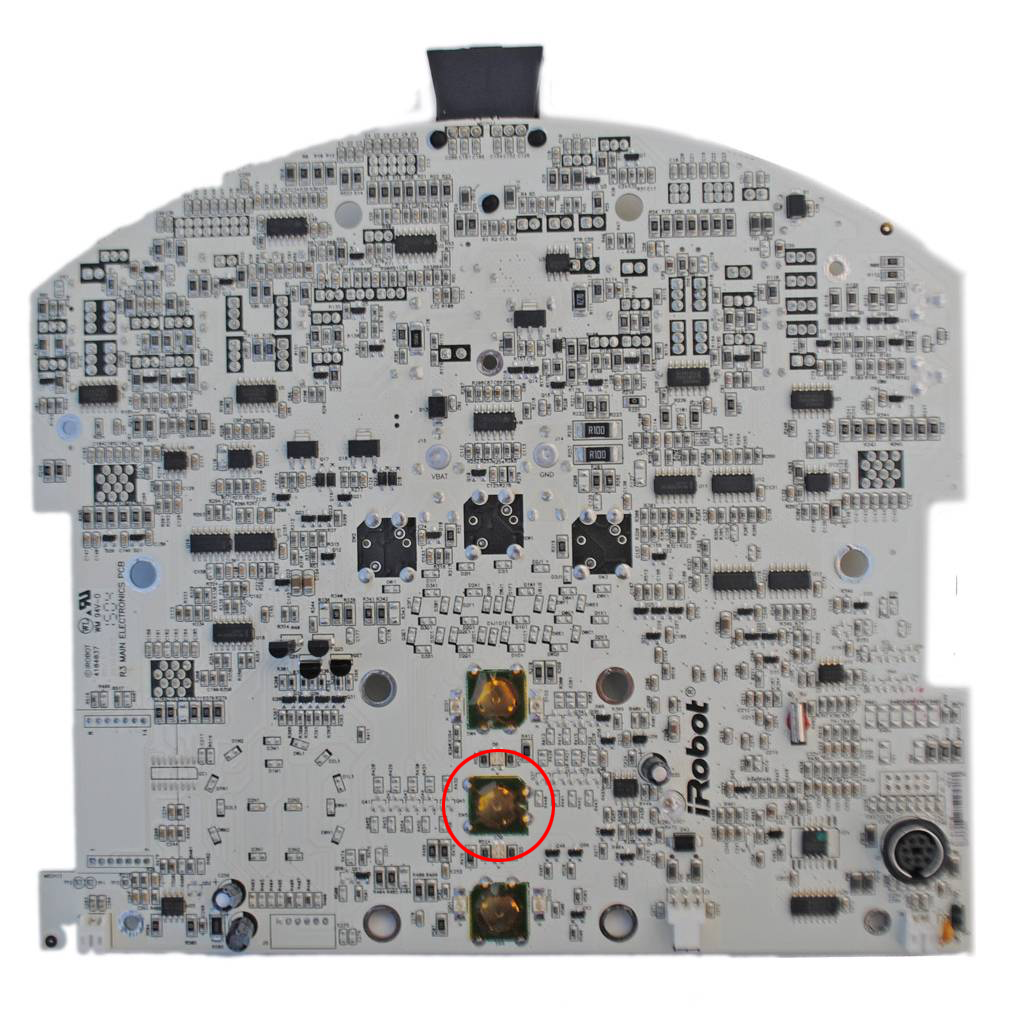Connect a Roomba 581 to the Cloud with a Particle Photon.
Making a donation is an act of generosity. Your support, however modest it might be, help to continue to support and improve this project!
Your queries will be given the highest priority, and you will be credited in the source code as a generous donor.
Paypal: Donate
Flattr: Donate
Bitcoin:
1Kz88Erut22xptZP8vW6tm5ZH2pFWv9i4LLitecoin:
LNKP4XvL9mj33HHpFvLxEAWUckAV7FHs9sEthereum:
0x9Bf203BE312c8FFD8967bD908C292e3b26B3b94f
Obviously, a Roomba is required. I used a Roomba 581, which is part of the Roomba 500 Series but it should work with any Roomba with a SCI Mini-DIN 7 port that supports the Open Interface (OI).
The new Roomba 900 Series does no longer have an SCI Mini-DIN 7 port.
This should work with any of the below mentioned Wi-Fi connected microcontollers although it has onlry been tested with the Particle Photon and with its -- now discontinued -- predecessor, the Spark Core.
The Particle Photon as well as any variations like the P0 or P1) or its -- now discontinued -- predecessor, Spark Core or other Particle Cloud-connected devices like the RedBear Duo are the recommended microcontrollers. The code here is written for them. Of course it also works with the Particle Electron in the unlikely case that you want 2G/3G connectivity for your Roomba.
Make sure that your microcontroller has the latest firmware. Here is a guide on how to update the firmware for the Particle Photon.
Since the Feather M0 and the HUZZAH are Arduino compatible, the code should also work with only minor adaptions.
Same goes for a raw ESP8266 WiFi microcontroller board, although personally my experience with these is very limited. I always appreciate feedback or pull-requests!
Most Roombas, up to the new Roomba 900 Series does no longer have an SCI Mini-DIN 7 port with serial RX/TX pins that can be used to communicate with Roomba over the OI.
This connector provides two-way, serial communication at TTL (0V – 5V) levels. The connector also provides an unregulated direct connection to Roomba’s battery, which you can use to power the OI applications. The Mini-DIN connector is located on the top of Roomba, beneath the snap-on decorative cover.
| Pin | Name | Description |
|---|---|---|
1 |
Vpwr |
Roomba battery + (unregulated 15.5V – 18V) |
2 |
Vpwr |
|
3 |
RXD |
0V – 5V Serial Input to Roomba |
4 |
TXD |
0V – 5V Serial Output from Roomba |
5 |
DD |
Device Detect Input (active low) 1 |
6 |
GND |
Roomba battery ground |
7 |
GND |
1 The DD pin is used to wake Roomba from sleep. See Caveats and Issues if this does not work for your Roomba.
iRobot® has provided a great specification document for the Open Interface: iRobot® Roomba 500 Open Interface (OI) Specification
It's a good starting point to understand the connections to the microcontroller and how to send commands to Roomba.
For Roomba models that have no wake up input on pin 5 of the external connector, you can connect the Particle Photon to the clean button input and control this from the microcontroller. The code needs to be changed for this to work.
Connect the Particle Photon's D0 pin to the Roomba's Clean button through an 8K Ω resistor.




